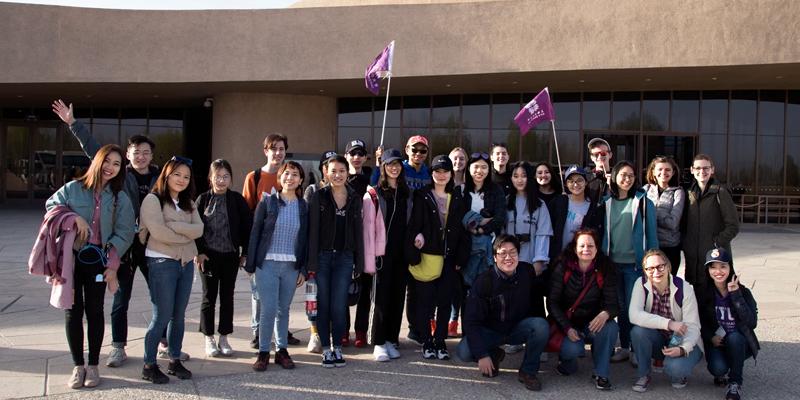For months, as part of a research project for Professor Zhao Lu’s course, “Dunhuang and its Global Connections,” Sarah Brooker ’21 had immersed herself in the details of the 1,400 year old buddhas, apsaras, and frescoes of one of the nearly 500 buddha-filled Mogao Caves in the northwestern Chinese city of Dunhuang, a former oasis town on the ancient Silk Road.
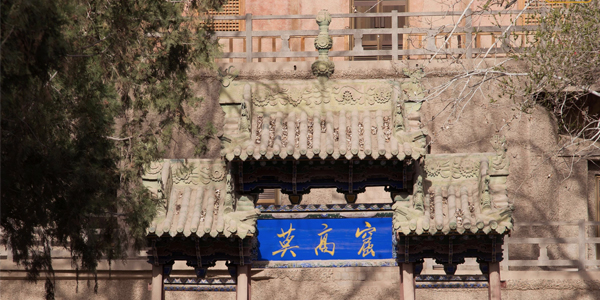
Mogao Caves
Then, in April, on a spring break trip to the caves with 21 NYU Shanghai classmates organized by the Office for Community Engaged Learning and led by Professors Zhao, Chen Wuwei, Barbara Edelstein, and Lena Scheen, Brooker was able not only to see “her” cave, Cave 57, but to present her research standing before the actual sculptures and paintings she had studied for so long.
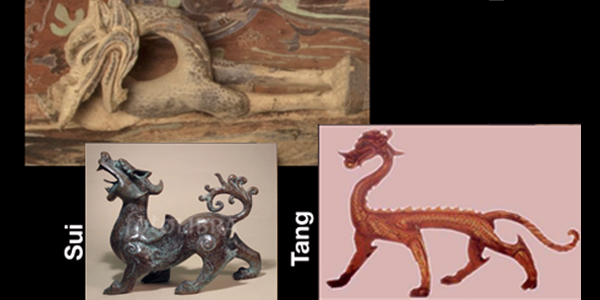
A slide from Sarah Brooker ’21’s presentation about cave 57
“It almost ‘felt like home’ when I saw the statue of Buddha sitting in the cave, since I had been studying it for half a semester,” says Brooker. “Seeing it with my own eyes was a shocking experience – pictures online could not capture the vividness of the paintings.”
Brooker’s reaction to seeing the objects of her study with her own eyes was a key goal for the professors leading the trip. “Not only did we want the field trip to be an opportunity for students to develop a personal relationship with history, but we also wanted them to learn about the history of the place through all of their senses,” says Zhao, who is an Assistant Professor of Global China Studies.
During the trip, eight of Professor Zhao’s students were able to make presentations in “their” caves, impressing the Dunhuang guides with their mastery of the material that the guides decided to grant the students access to many more caves that were not originally on the tour route.
When planning the trip, each of the four professors brought their unique research focuses in history, art, and digital cultural heritage to the table, and set out to create a memorable cross-disciplinary experience for the students. “I want the students to remember doing research in situ, and the aesthetic experience of the caves and niches,” says Assistant Arts Professor Chen Wuwei.
Interactive Media Arts (IMA) major Bin Xue ’19, who had taken Professor Chen’s course “Digital Sculpting Facial Animation” in the fall, said that after visiting the caves, she gained a greater understanding of the important role digital heritage technologies can play in helping people experience the caves online. “When you search for photos of the Mogao Caves online, you get clear and bright footage, which is totally different from the experience when you actually visit them,” Bin says. “It’s actually very dark in the caves, and you can only see what the flashlight is pointing to. If the digital content doesn’t mimic this effect of art appearing from the darkness, it’s not a true representation of the experience of visiting the caves.”
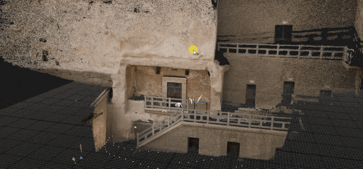
A GIF animation of the preliminary result by point cloud visualization. Digital documentation by IMA students.
Chen says the high resolution photographs taken by his students on the trip can be compiled into interactive 3D digital models. Users will be able to orbit and zoom in to see the detailed outlooks of the documented caves. Annotations and comments on the web-based platform will also be available.
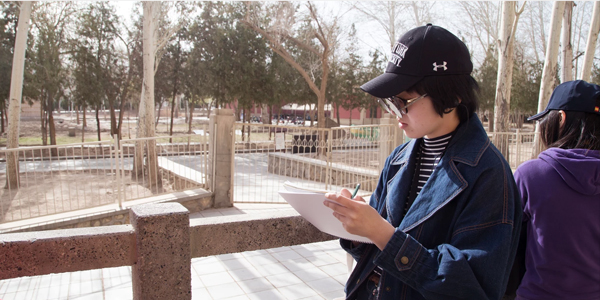
Xu Xinyi ’19 sketching the scenery outside the Mogao Caves
Xu Xinyi ’19, a student of Clinical Associate Professor of Arts Barbara Edelstein’s class “Chinese Gardens in Art: Nature and Culture - Tradition to Contemporary,” says she was impressed by the landscape of the nearby Gobi Desert, and decided to create a final project that mimicked the rolling sand dunes and endless horizons surrounding the oasis of Dunhuang.
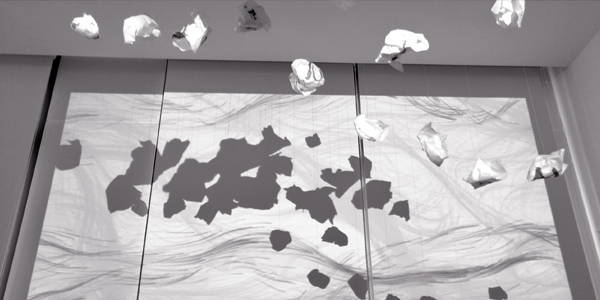
Xu uses white noise captured from the NYU Shanghai academic building and transforms the sound into an algorithm driven video of ink flow. Xu says the result is reminiscent of the landscape she saw in northwest China.
“We learned a lot from each other on this trip, since we are all from different majors and classes,” says Xu. “The cave paintings were incredibly beautiful, and they really resonated with me, because I got to learn about the stories behind them from students in Professor Zhao’s class.”
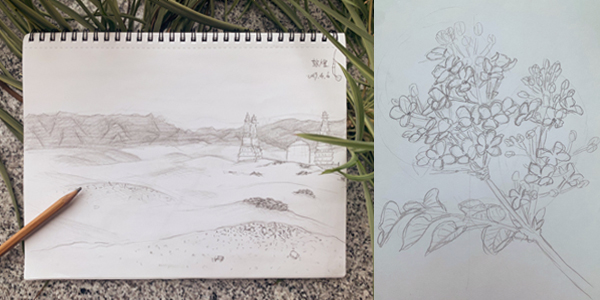
Xu’s sketches of the Dunhuang landscape and a desert lilac
"The Office for Community Engaged Learning supports faculty to develop out-of-the-classroom opportunities for students that deepen their understanding of course content and enhance their learning experience," said Diane Geng, Associate Dean for Academic Affairs. "We look forward to more faculty-led trips in the future."


